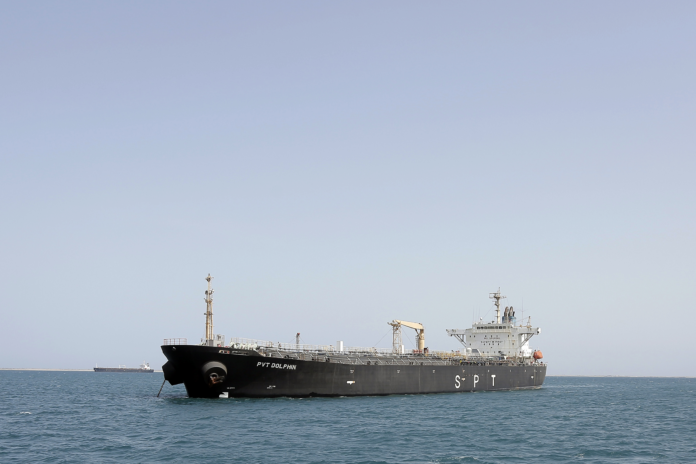Yemen’s Houthi rebels on Monday launched a series of unsuccessful attacks against two U.S. Navy destroyers with drones and missiles, the U.S. Department of Defense said Tuesday.
What Happened?
According to a statement from the Pentagon, the Iran-backed Houthis deployed a mix of at least eight drones, five ballistic missiles and three anti-ship cruise missiles aimed at the USS Stockdale and USS Spruance, which were navigating the Bab el-Mandeb Strait.
Despite the intensity of the offensive, both vessels escaped unscathed, and no injuries were reported, Pentagon press secretary Major General Pat Ryder said.
Meanwhile, in the hours before the Pentagon’s announcement on Tuesday, Brigadier General Yahya Saree, a Houthi military spokesperson, released a pre-recorded statement that claimed the rebels attacked two American destroyers in the Red Sea using ballistic missiles and drones.
A commercial ship is seen on the Red Sea coast off Hudaydah, Yemen, on May 12, 2024. Yemen’s Houthi rebels launched a series of unsuccessful attacks against two U.S. Navy destroyers with drones and missiles,… A commercial ship is seen on the Red Sea coast off Hudaydah, Yemen, on May 12, 2024. Yemen’s Houthi rebels launched a series of unsuccessful attacks against two U.S. Navy destroyers with drones and missiles, the Defense Department said Tuesday. More Mohammed Hamoud/Getty Images
Impact of Attacks in the Red Sea
The strait, a crucial passageway linking the Red Sea and the Gulf of Aden, typically sees an estimated $1 trillion in goods annually. Houthi forces have ramped up attacks in this region in response to escalating conflicts between Israel and Hamas last October and Israel’s ongoing ground operations in Lebanon.
The Houthis have insisted that the attacks will continue as long as the wars go on. The sustained assault on shipping in the Red Sea region has already led to a significant reduction in traffic, creating a bottleneck in global trade.
Recent U.N. findings suggest that the Houthis may be leveraging the maritime passage for financial gain, reportedly extorting up to $180 million monthly from shipping companies for safe passage.
The Houthis have yet to respond directly to the U.N. claims, but they are believed to have issued threats to shippers, suggesting that refusal to pay might carry consequences with at least one vessel previously threatened coming under attack.
Similar Incidents
The latest incident comes as a commercial ship on the Red Sea near the rebel-controlled port city of Hodeida was reportedly attacked on Tuesday, though no injuries were reported on board.
Multiple explosions rocked the vessel in what was a suspected attack by Yemen’s Houthi rebels. However, the assault did not immediately cause any reported damage, according to the British military’s United Kingdom Maritime Trade Operations (UKMTO) center.
Since the conflict in Gaza erupted in October 2023, the Houthis have targeted over 90 commercial vessels with missiles and drones.
This ongoing campaign has resulted in the seizure of one vessel, the sinking of two others and the deaths of four sailors.
The U.S.-led coalition in the region has managed to intercept some missiles and drones, preventing the weapons from reaching intended targets.
While the Houthis maintain that their targets are vessels associated with Israel, the U.S. or the U.K., several ships with no apparent connection to the conflict, including those bound for Iran, have also been attacked.
The Houthi threat also extends beyond the Red Sea. Since mid-October, U.S. forces have launched airstrikes against Houthi positions, including a B-2 bomber deployment to dismantle underground Houthi bunkers.
This article includes reporting from The Associated Press.



